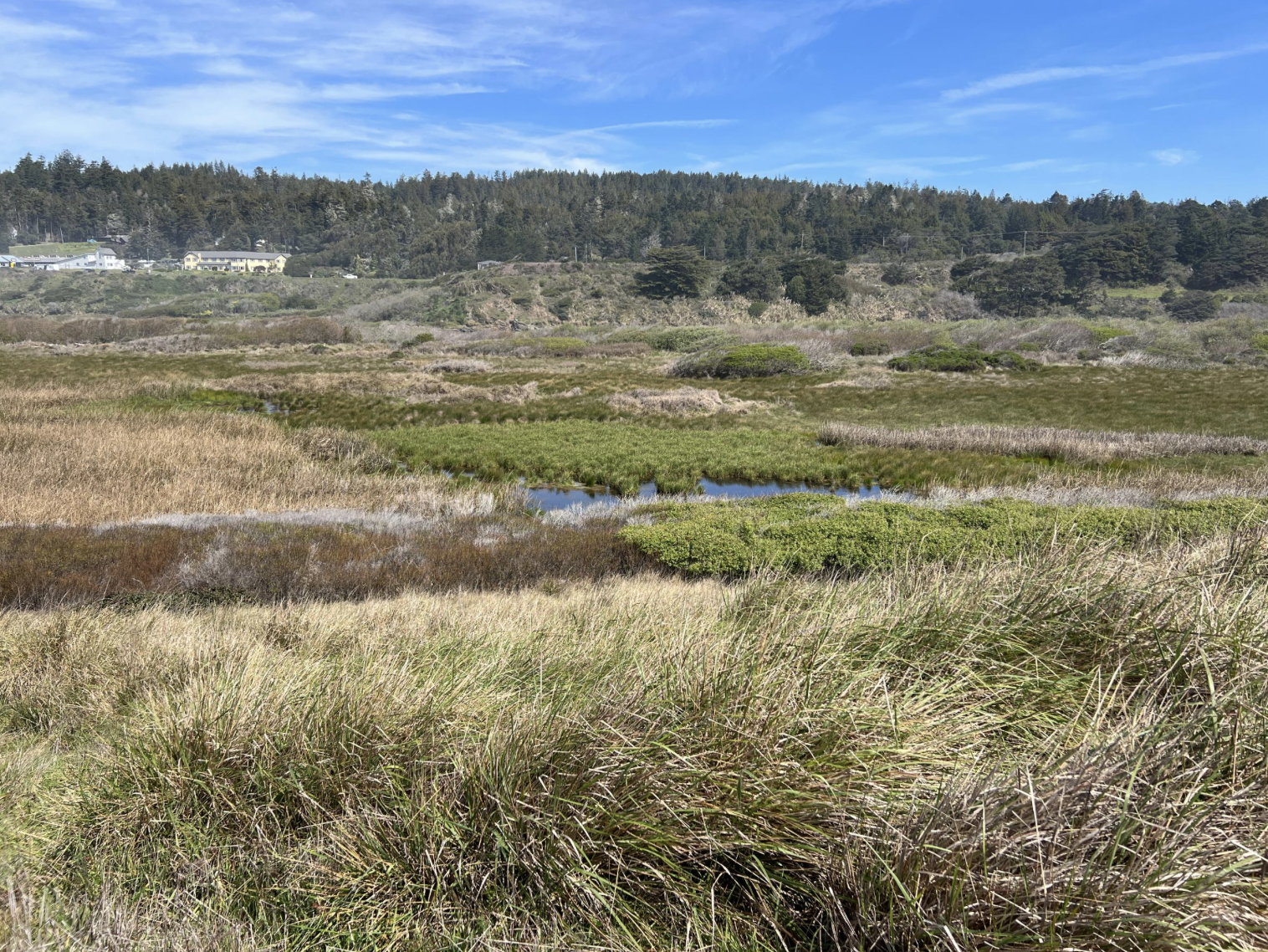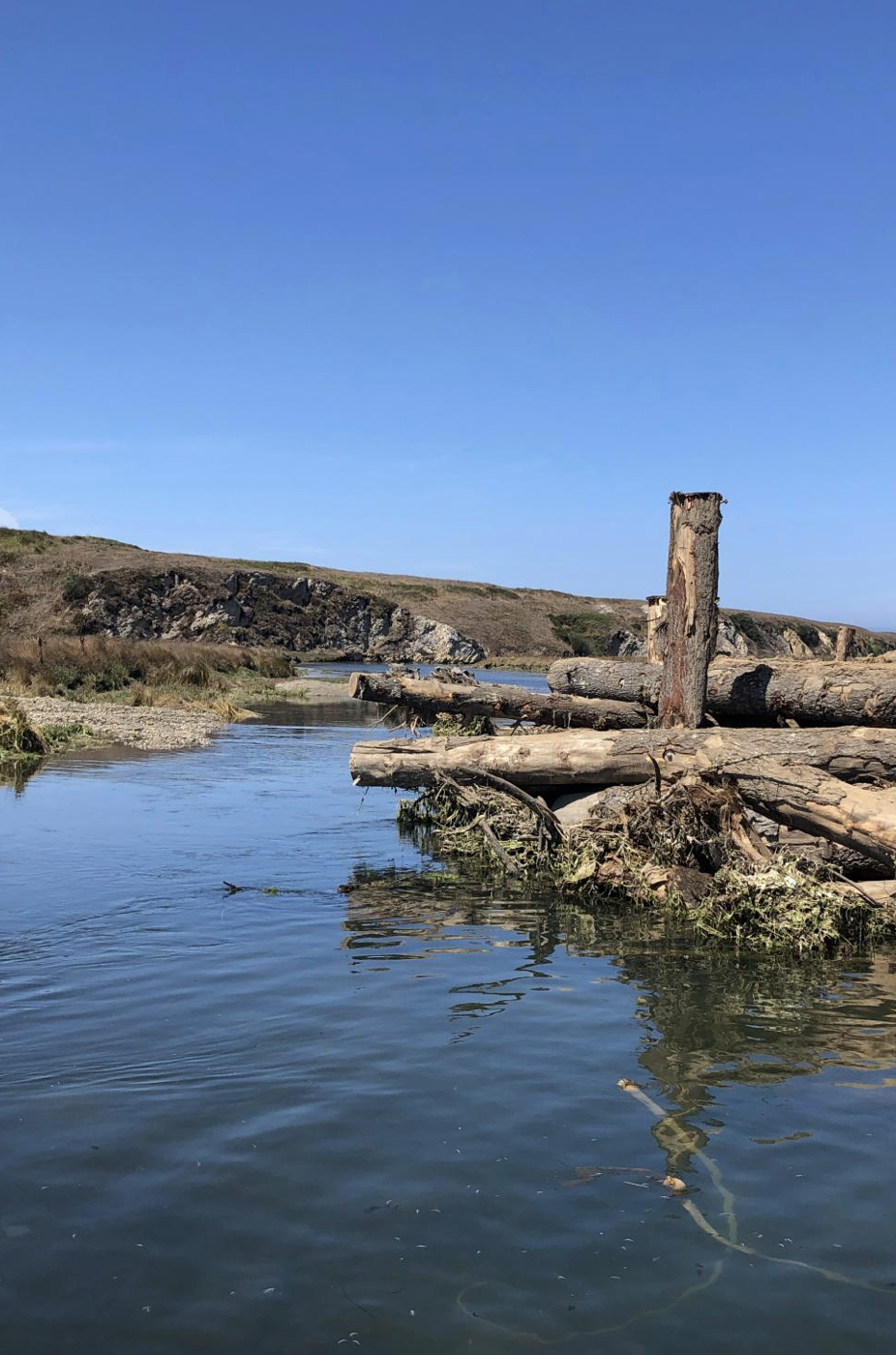Restoration
Gualala River Estuary Habitat Enhancement Project
Protecting and improving habitat in the estuary has long been a top priority in the community, and it’s essential to the recovery of coho salmon and steelhead trout in the watershed. Through strong partnerships, science-based planning, and local support, we’re working toward a healthier, more vibrant future for the Gualala River estuary.
For more than a year, environmental science and design firm Prunuske Chatham, Inc. (PCI) has been gathering hydrologic data to inform the estuary habitat enhancement plan. PCI conducted several site visits, examined topographic maps and photos of the estuary, reviewed existing data and reports on the Gualala estuary, and interviewed local residents and scholars to gain an understanding of the current habitat conditions and estuary hydrodynamics. Monitoring stations were installed in the estuary to collect continuous water surface elevation, water temperature, and salinity data.
Take a look at the story map, which outlines the conditions in the estuary, historical factors, and identifies opportunities for salmon habitat restoration.
- The initial proposals for the Gualala River estuary were shared at the Restoring the River: Community Event, followed by a Q&A session.
- Still have questions? You can submit them here.
This project is funded by the California Department of Fish and Wildlife’s Fisheries Restoration Grant Program and developed in alignment with long-term ecological goals set by CDFW and NOAA Fisheries.

Emergent Wetlands
The longer that juvenile salmon spend feeding in estuaries and lower watershed wetlands, the more likely they are to survive in the ocean, return to the same river, and begin the cycle again. Emergent wetlands–shallowly flooded areas with plants that “emerge” above the water’s surface–provide important food and shelter as salmon prepare for their migration to the ocean.
The loss of these wetlands has significantly reduced available salmon habitat in the Gualala River estuary. Restoration would significantly increase aquatic vegetation in the estuary and support juvenile salmon across a range of hydrologic conditions—offering refuge from predators, access to food, and space to grow before beginning their ocean journey.

Large Wood in Streams
Salmon look for good places to feed, but they also need to avoid predators and poor water quality. To stay safe, young salmon need dense plants or large pieces of wood in the water to hide around. Large wood is especially important for coho salmon—it helps form deep pools, offers shelter from predators, and slows down fast-moving water. During high flows, these calmer areas give adult salmon a place to rest as they migrate. Young salmon also use them for resting and feeding. Large wood supports insects and algae, which are important food sources for salmon.
Restoration projects often add large wood back into streams to replace what has been lost. These projects can quickly improve stream habitat by making it more complex and better for salmon.
Learn more about the Restoring the River initiative.
